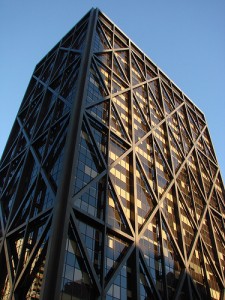I got my first ad agency job in 1969. Bernie Anastasia hired me. He was the Executive Art Director for Tatham-Laird & Kudner in Chicago. Back then that title meant every art director in the agency reported to him.
Bernie was my final interview. We hit it off immediately. I remember him asking how much money I wanted. I told him. It was about twenty-four hundred dollars more than I was presently making.
He phoned the next day and said he wanted to hire me but there was a problem with the money. My heart dropped. I had just bought a new house, had two small children and knew this was my big chance to get a foot in the door of an ad agency. I resigned myself to the idea that I would have to settle for whatever he offered. Before I could finish the thought, I heard him say he would pay me a thousand dollars more than I was asking. I was floored. A thousand dollars was a lot of money in those days. Years later, Bernie revealed that he always offered more money to people he wanted to hire because it made them feel good about working for him and for the agency.
Let me give you a little background on Tatham-Laird & Kudner. Originally founded in 1946 as Tatham-Laird Advertising in Chicago, it merged with Kudner Advertising of New York in 1960. Art Kudner passed away well before the merger. By the time I arrived, Art Tatham and Ken Laird, although on the Board of Directors, were no longer involved in the day-to-day activities of the business. Ken Laird lived in Florida and would pilot his own plane up for Board meetings. Art Tatham, who lived in the Chicago area, still maintained an office at the agency and came to work every day.
During my first few months with the agency, I was teamed with Bernie Anastasia to work as his writer on special projects and on collateral advertising for Continental Bank’s Master Charge Card Division.
One day, Bernie poked his head into my doorway and invited me to a meeting in Art Tatham’s office for a special assignment. It turned out to be a personal favor for Art Tatham.
Art Tatham owned and raised breeding stock bulls and wanted Bernie to create an ad offering the stud services of one of his prize bulls. He gave me the pertinent copy information and supplied Bernie with a number of photographs.
Bernie began designing the ad. I wrote the copy, which wasn’t much. I watched over the next few days as Bernie roughed out a number of ads with various photographs of the bull. It wasn’t long before Bernie came to the conclusion that the photos were pretty boring. They were all profile shots of the bull. So we traipsed back up to Art Tatham’s office to see if he had any other shots, perhaps a close-up of the bull’s face.
Art Tatham sat at his desk and listened politely and patiently as Bernie explained in all sincerity how he thought a “cuter” shot of the bull’s face would grab attention and make a more effective piece of advertising. When Bernie finished, Art Tatham simply smiled and gently replied, “Bernie, I think the profile shots will do just fine because the last thing a breeder looks at – is the bull’s face.”



